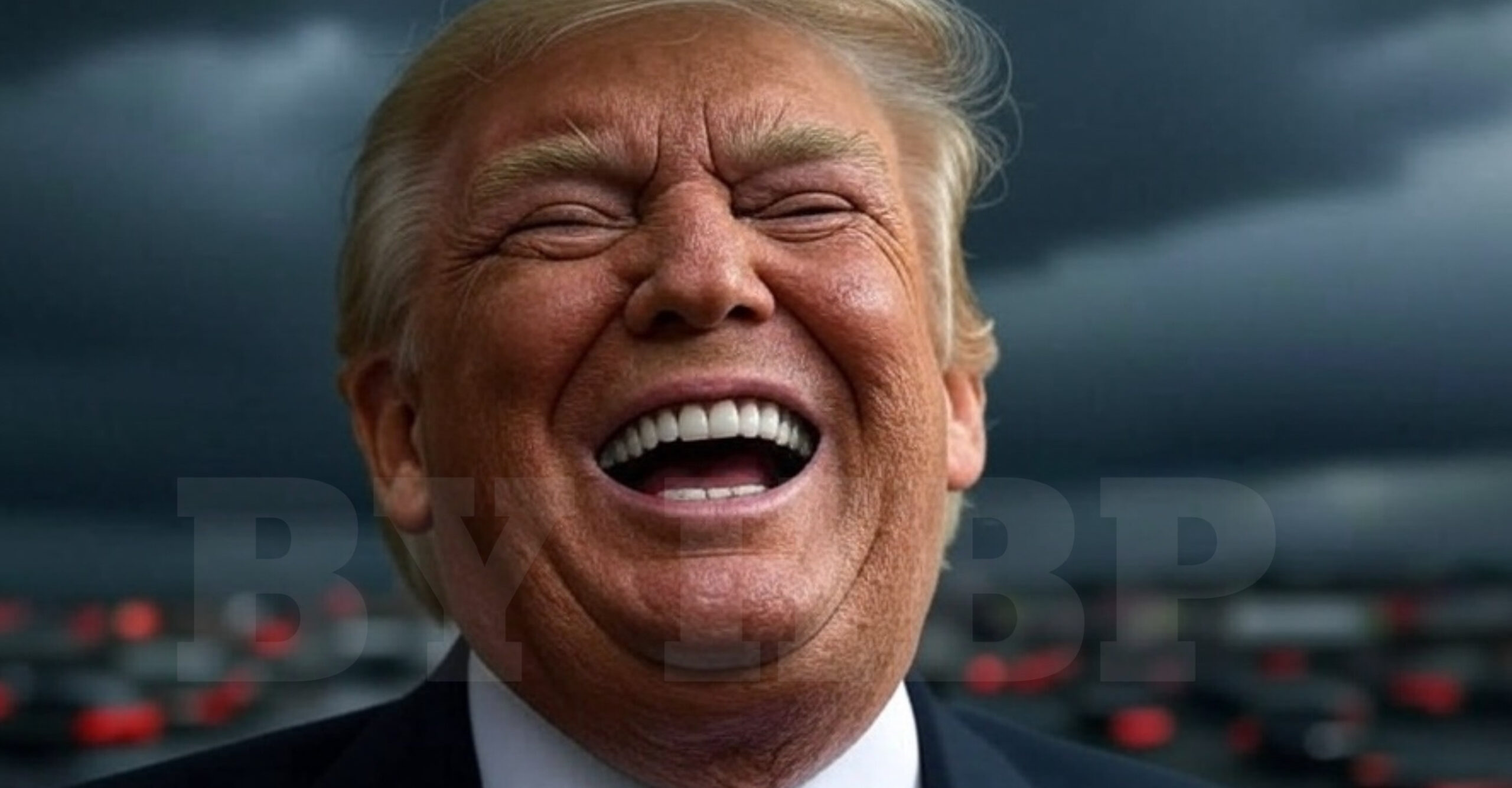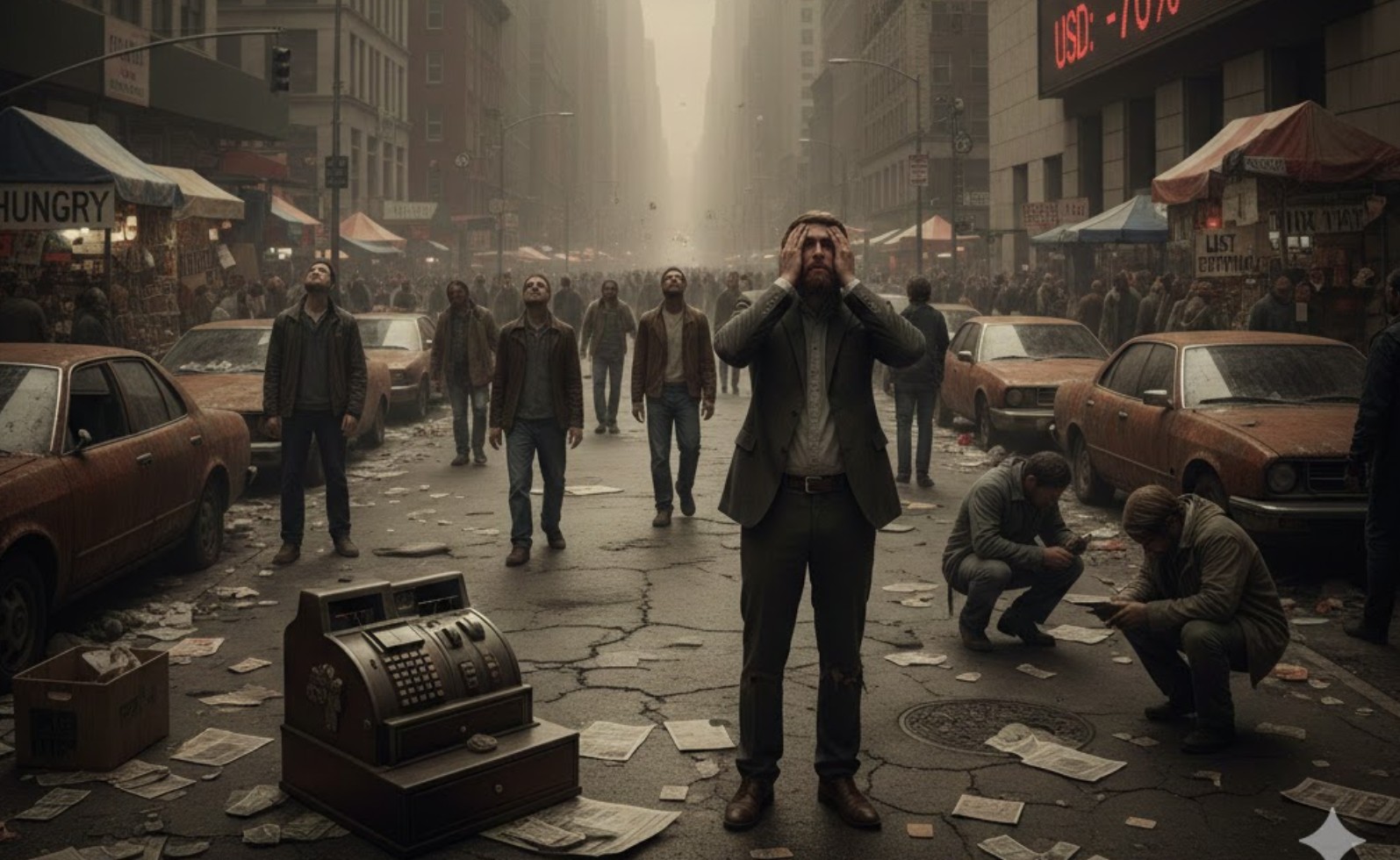When Donald J. Trump returned to the White House, his supporters claimed it was the rebirth of American greatness. “Make America Great Again” had become more than a slogan; it was a movement, a faith, a declaration of war against what Trump called the “radical Left” and the “globalist elites.” But as months turned into years, the cracks in the narrative widened into gaping fissures. Today, under Trump’s second administration, the United States finds itself facing economic stagnation, international isolation, and a political climate more toxic than ever.
This is not merely a story about a politician or a political party. It is the story of a nation in slow-motion collapse, a superpower stumbling into decline under the weight of its contradictions. Rising inflation, surging unemployment, disillusioned farmers, collapsing trade relations, and a ballooning national debt—these are not isolated issues but symptoms of a deeper malaise.
Let us examine the America of today: an America where soybeans rot in silos, the working class slips into poverty, the dollar loses its primacy, and the President calls his political opponents “terrorists.”
Inflation and the Vanishing American Paycheck
Inflation is often called the “silent tax.” Under Trump’s renewed economic stewardship, it has become a roaring thief. Prices for basic goods—bread, milk, gasoline, utilities—have surged to levels unseen in decades. The administration blames supply chain disruptions, green energy policies, and “Biden’s legacy of incompetence.” But the reality is simpler: reckless tariffs, endless trade wars, and political brinkmanship have undermined confidence in American markets.
Wages have not kept pace. For many households, paychecks that once stretched to the end of the month now collapse by the second week. Families cut back on groceries, cancel vacations, and juggle bills in a way reminiscent of the 1970s stagflation era. Unlike in the 1970s, however, there is no bipartisan effort to restore balance. Instead, the White House continues to trumpet “the strongest economy in history,” a claim met with eye-rolls even from struggling Republican voters in the Midwest.
Inflation is not an abstract number; it is the gnawing feeling when parents tell their children they cannot afford new shoes. It is the pensioner who skips medication to pay the electricity bill. It is the small business owner who closes shop because customers can no longer afford non-essential goods. This inflation is not silent—it is screaming.
The Unemployment Spiral
While inflation erodes purchasing power, rising unemployment deepens despair. Trump’s second term was supposed to be about “bringing jobs back home.” Instead, industries battered by tariffs, boycotts, and trade uncertainty have laid off thousands.
Manufacturers, once hopeful about Trump’s “America First” agenda, are finding that decoupling from global supply chains is more costly than advertised. Small and medium-sized businesses, already struggling with higher material costs, are cutting staff. Even the vaunted energy sector, which Trump promised to unleash, has seen layoffs amid volatile oil markets and diminishing global demand.
The human toll is visible. In Ohio, job fairs once bustling with recruiters now feel like funerals of optimism. In Detroit, the auto industry teeters under declining exports. In rural communities, shuttered factories become ghostly reminders of promises unfulfilled.
Unemployment is not just a statistic; it is the erosion of dignity. For every American worker idled, there is a family facing rent overdue, children losing healthcare, and parents battling anxiety about the future.
Soybeans and the Forgotten Farmers
If there is one symbol of the Trump-era economic collapse, it is the soybean. Once the pride of American agriculture, soybeans have become the crop of despair. When China—America’s largest soybean customer—cut imports in retaliation against Trump’s trade wars, Midwestern farmers were left stranded with overflowing silos and collapsing prices.
Trump promised relief packages and subsidies, but for many farmers, it was too little, too late. Years of hard work, investments in machinery, and generational family farming traditions are now jeopardized. “We voted for him because he said he’d fight for us,” says Mark Jensen, a soybean farmer in Iowa. “Instead, he fought China, and we became the casualties.”
The tragedy is not only economic but cultural. Farming communities represent the backbone of America’s identity. The collapse of their livelihood signals more than just market loss—it signals the unraveling of the American heartland.
Goods That Grow More Expensive by the Day
American households live with the reality that everything costs more: groceries, clothes, appliances, vehicles, housing. Import tariffs imposed by the Trump administration have transformed consumer markets into hostile territory. Retailers, unable to absorb higher costs, pass them on to buyers.
The promise was that tariffs would protect American workers and industries. Instead, they became a tax on consumers. Washing machines, electronics, toys, and furniture—all costlier. Supply shortages magnify the pain. The phrase “Made in America” does not comfort families staring at empty wallets.
Inflation feeds into this cycle, creating a vicious loop: prices rise, wages stagnate, demand weakens, businesses struggle, and unemployment rises further. America finds itself caught in a self-inflicted economic storm.
Rising Poverty and the Broken Dream
The myth of upward mobility—the idea that anyone can achieve success through hard work—is eroding under Trump’s America. Poverty rates, which had declined during previous administrations, are climbing once more. Food banks report record demand. Homeless shelters overflow. Entire neighborhoods in cities like Los Angeles, Chicago, and Philadelphia have become tent cities of despair.
Government safety nets, underfunded and politicized, cannot keep pace with the crisis. Trump’s administration frames welfare recipients as “lazy takers,” echoing decades-old conservative rhetoric. Yet the reality is that millions of working poor are slipping below the poverty line despite holding jobs.
The American Dream, once sold as a promise, is now an illusion. For many, the dream has become simply surviving the month.
Trump’s War on the Left: “Terrorists in Our Midst”
Economics alone cannot explain America’s turmoil. Politics under Trump has taken a darker, more authoritarian turn. The President frequently refers to Democrats, progressives, and left-leaning activists as “terrorists” who are “destroying America from within.” He has pushed for legislation to label certain progressive organizations as “domestic terrorist groups,” a move critics argue is a blatant attempt to criminalize opposition.
Rhetoric matters. When a President calls his rivals “terrorists,” he erodes the fabric of democratic discourse. He turns neighbor against neighbor, feeding into a culture of fear and suspicion. Protesters risk being branded enemies of the state. Journalists are vilified as “fake news traitors.” Universities are accused of “radical indoctrination centers.”
This demonization has consequences. Hate crimes rise. Political violence becomes normalized. Citizens retreat into partisan bubbles, unwilling to speak openly in public. The chilling effect is real: democracy shrinks as authoritarianism grows.
The BRICS Revolt: America Loses Friends
Internationally, America’s decline is equally stark. The BRICS nations—Brazil, Russia, India, China, and South Africa—have grown increasingly hostile to Washington’s unilateralism. Once wary of challenging U.S. dominance, they now see opportunity in America’s weakness.
China and Russia, in particular, champion an alternative world order that sidelines the dollar and reduces dependence on American markets. India, though historically balancing between East and West, has deepened ties with Beijing and Moscow. Even Brazil and South Africa, once more sympathetic to U.S. influence, are pivoting toward multipolar alliances.
For decades, America’s greatest strength was its network of allies. Under Trump, that network has frayed. Traditional partners in Europe feel abandoned. Asian allies doubt U.S. commitments. In trade, diplomacy, and security, the U.S. finds itself increasingly isolated.
The Declining Dollar
For nearly a century, the dollar was the cornerstone of global finance. Today, its dominance is under siege. The rise of alternative currencies, digital platforms, and BRICS-led initiatives to bypass the dollar in trade has accelerated America’s financial vulnerability.
Investors once flocked to U.S. treasuries as the safest bet. Now, skepticism grows. Credit rating agencies warn of downgrades. Inflation and ballooning deficits erode confidence. Nations diversify their reserves, reducing reliance on the dollar.
For Americans, a weakening dollar means imports become costlier, foreign investments retreat, and global influence wanes. The symbol of American strength is no longer unquestioned.
The Ballooning National Debt
No picture of America under Trump is complete without addressing the national debt. Already massive, the debt has surged at record speed under his administration. Tax cuts without offsets, endless subsidies to appease disillusioned industries, and defense budgets that dwarf social spending have pushed debt levels into uncharted territory.
Republicans once prided themselves on fiscal conservatism. Under Trump, that rhetoric has collapsed. The national debt is not simply a number—it is a generational theft. Today’s excesses will be tomorrow’s burden. Children born now inherit not opportunity but obligation.
The Decline of a Superpower
The story of America under Trump is not one of greatness restored but of decline accelerated. Rising inflation, unemployment, poverty, international isolation, and authoritarian rhetoric combine into a grim tableau. America is not merely struggling—it is unraveling.
History will ask: how did the most powerful nation on Earth, with unparalleled resources and talent, allow itself to stumble so far? The answer may lie in hubris, in the seductive appeal of nationalism over pragmatism, in the willingness to trade democracy for the illusion of strength.
America still has the capacity to recover. Its people remain resilient, its institutions—though battered—retain strength. But time is running out. Every year under Trump deepens the crisis, making the path back steeper and more uncertain.
The dream of “Making America Great Again” has, in reality, made America weaker, poorer, and more divided. The world watches, not with envy, but with pity.
Sources
Economic Data & Reports
- U.S. Bureau of Labor Statistics (BLS) – Monthly unemployment rate reports
- U.S. Bureau of Economic Analysis (BEA) – Inflation and GDP data
- U.S. Department of Agriculture (USDA) – Crop export data, including soybean trade statistics
- Congressional Budget Office (CBO) – National debt and federal budget projections
News & Analysis
- The New York Times – Coverage on U.S.-China trade war impacts on farmers
- The Washington Post – Reporting on poverty rates and food bank demand in the U.S.
- Financial Times – Articles on BRICS economic strategies and de-dollarization efforts
- Reuters – Analysis of U.S. tariffs, global trade disruptions, and supply chain crises
- Bloomberg – Reports on the weakening U.S. dollar and investor sentiment
- Politico – Coverage of Trump’s political rhetoric and moves against left-leaning organizations
- The Guardian – International perspective on America’s shifting global role
Academic & Policy References
- Brookings Institution – Studies on U.S. poverty and social mobility
- Peterson Institute for International Economics – Trade policy analysis
- Council on Foreign Relations – Briefings on U.S. foreign policy and BRICS developments



